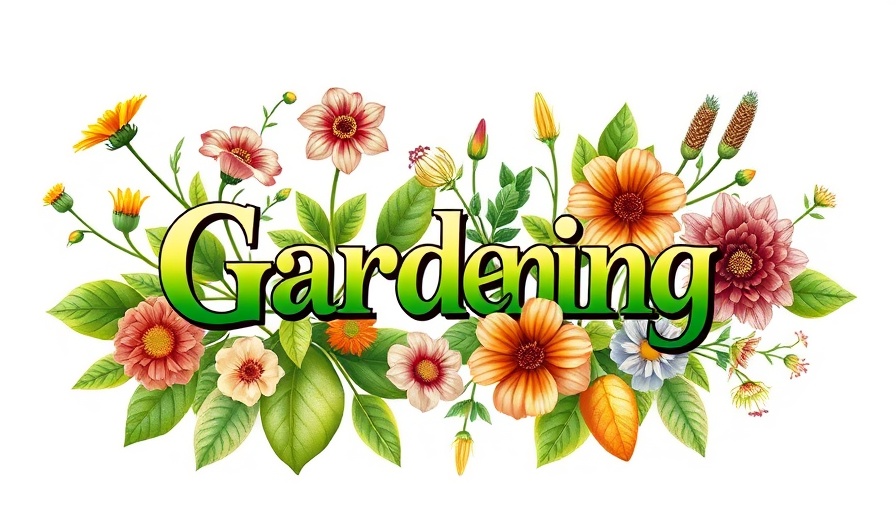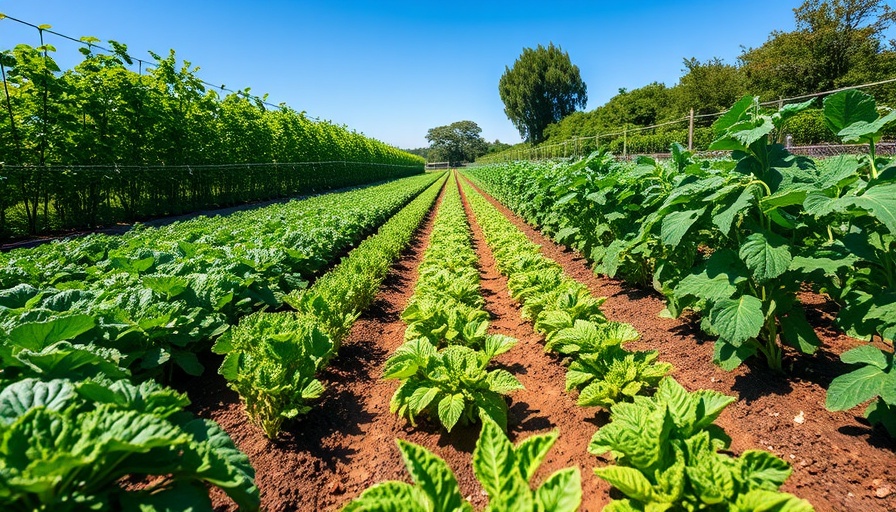
Why Drought-Tolerant Flowers Matter for Gardeners
In recent years, the conversation about gardening has shifted dramatically. As climate changes usher in longer dry spells and extreme heat, gardeners are turning to drought-tolerant flowers as their allies. These resilient blooms not only promise low maintenance but also play a crucial role in preserving our environment.
Choosing the Right Drought-Tolerant Flowers
If you're considering enhancing your garden with drought-tolerant flowers, selecting native plants is key. These varieties are already adapted to local soil and climate conditions, ensuring they thrive with minimal care. For example, plants like Prairie smoke (Geum triflorum), with its unique downturned flowers that later rise to create fluffy seed heads, can survive harsh winters. Similarly, Canada columbine (Aquilegia canadensis) thrives in poor soils and attracts essential pollinators like bees.
The Watering Needs of Your New Flowers
While drought-tolerant flowers are designed to withstand dry conditions, newly planted perennials still require regular watering until they establish their root systems. Initially watering them daily can significantly boost their resilience, allowing them to adapt to their new environment. Once they take hold, many of these plants can thrive without regular watering.
Understanding Drought Stress
Even well-established perennials can experience stress during drought conditions; however, this stress is often manageable. It's crucial to recognize the signs of stress in your plants, such as wilting or discolored leaves. Taking proactive measures, such as mulching, can help retain soil moisture and provide insulation against extreme temperatures, making a significant difference in plant survival.
The Future of Drought-Resistant Landscaping
As climate change continues to impact weather patterns globally, the trend toward drought-resistant landscapes is likely to become even more pronounced. Homeowners should view their gardens as ecosystems that can help mitigate some effects of climate change. Incorporating a diverse range of drought-tolerant perennials not only enhances aesthetic appeal but also contributes to biodiversity and habitat preservation.
Practical Tips for Creating a Drought-Resistant Garden
- Soil Preparation: Amend your garden soil with organic matter to improve drainage and water retention.
- Mulching: Apply a layer of organic mulch around plants to keep soil temperatures stable and reduce moisture loss.
- Group Planting: Arrange plants with similar water needs together to optimize watering efficiency.
By taking these steps, you can enjoy a vibrant garden that flourishes despite changing climate conditions.
Embracing Native Plants for Resilient Gardens
Investing in native flowers not only yields a garden that can withstand drought but also supports local wildlife. Native plants are vital for attracting pollinators and providing food and habitat for local wildlife. By incorporating species that thrive in your area, you contribute to a sustainable ecosystem.
Conclusion: Why Act Now?
As conditions continue to change, now is the time to make environmentally mindful choices in your gardening practice. By opting for drought-tolerant flowers and implementing the right gardening techniques, homeowners can create a thriving landscape while also supporting ecological balance. Let's invest in our landscapes and foster resilience for the future.
 Add Row
Add Row  Add
Add 


Write A Comment